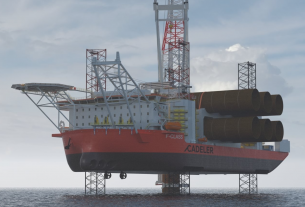United Kingdom/India – The Offshore Renewable Energy (ORE) Catapult in the United Kingdom and the National Institute of Wind Energy (NIWE) in India, each country’s leading wind energy research and development center, have agreed a five-year collaboration program.
They will collaborate on offshore wind innovation and R&D, market and supply chain growth, new technology testing and demonstration, and skills programs.
The two organizations are collaborating at a critical juncture in the development of offshore wind in India, as well as in the UK, where offshore wind has matured into one of the most cost-effective forms of energy generation, putting it at the heart of the green economy. Strengthening ties on clean energy research and projects to unlock India’s offshore wind potential in line with global climate change goals is critical, according to the India-UK 2030 roadmap.
Unlocking green energy
Scoping projects facilitated collaborative technology and research engagement between ORE Catapult and NIWE, as well as the broader Indian renewable energy supply chain, thanks to funding from UK Research and Innovation (UKRI). This technical partnership will help India and the United Kingdom unlock green, affordable energy while also boosting supply chain opportunities. Both the UK and Indian governments have endorsed and welcomed the collaboration.
A technical supply chain innovation analysis between the UK and India, supported by UKRI India, will be one of the key initiatives as part of the collaboration. Other early activities between ORE Catapult and NIWE are expected to include the development of technology demonstration infrastructure in Tamil Nadu, southern India; UK/India knowledge exchange and research collaboration to address the unique challenges of deploying offshore wind; and supply chain growth programmes between the UK and India, with a particular focus on installation, balance of plant, and Operations and Maintenance, as well as the identification of cost-effective silos.




